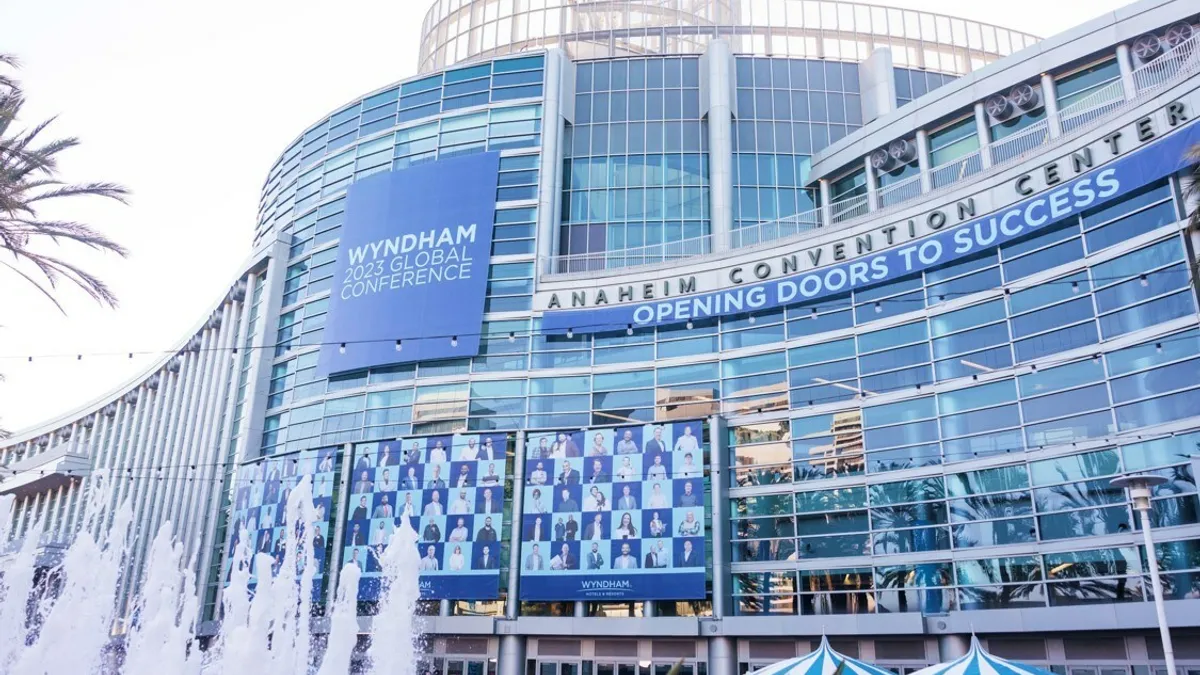Dive Brief:
- In a second-quarter earnings call Thursday, CEO Geoff Ballotti touted Wyndham Hotels & Resorts’ systemwide growth as a highlight amid a “softer” RevPAR environment, which saw U.S. RevPAR dip 4% year over year.
- Wyndham’s systemwide rooms grew 4% year over year in the quarter, and the company’s development pipeline grew 5% year over year to a record 255,000 rooms.
- Ballotti attributed the domestic RevPAR dip to Wyndham’s economy and midscale guests being “especially sensitive” to economic volatility, but noted “RevPAR lasts for a day, and pipeline lasts for a lifetime.”
Dive Insight:
When asked on the call to break down U.S. RevPAR performance further, Ballotti pointed to “continued softness” in leisure travel in Sun Belt states like Texas, Florida and California, where Wyndham has approximately one-quarter of its system.
Industrial states, particularly those with strength in oil and natural gas, offset some of the Sun Belt’s underperformance. Ballotti pointed to Ohio, Oklahoma, Pennsylvania, Wisconsin, Michigan and Missouri as high points, “all indicating steady demand from our blue-collar, everyday travelers.”
Similarly, Ballotti said Wyndham is anticipating a pickup in business around planned data centers.
Ballotti noted that part of the U.S. RevPAR dip was due to tough comparisons to Q2 2024, which saw the solar eclipse and different Easter holiday timing. When normalized for both events, Ballotti said, Wyndham’s Q2 2025 RevPAR would be down 2.3%.
Meanwhile, contract signings for hotels increased 40% year over year, as Wyndham logged its 20th consecutive quarter of pipeline growth. In the first half of 2025, Wyndham opened more than 30,000 rooms, an H1 record, and a 3% increase over H1 2024.
In the quarter, Wyndham also debuted Wyndham Connect Plus, an enhanced version of its AI-driven guest engagement platform, and Wyndham Marketplace, a platform designed to simplify hotel procurement for franchisees.
Hilton also reported dampened domestic RevPAR in Q2, with the company’s U.S. RevPAR dipping 1.5% year on year in the quarter on the back of economic uncertainty.










